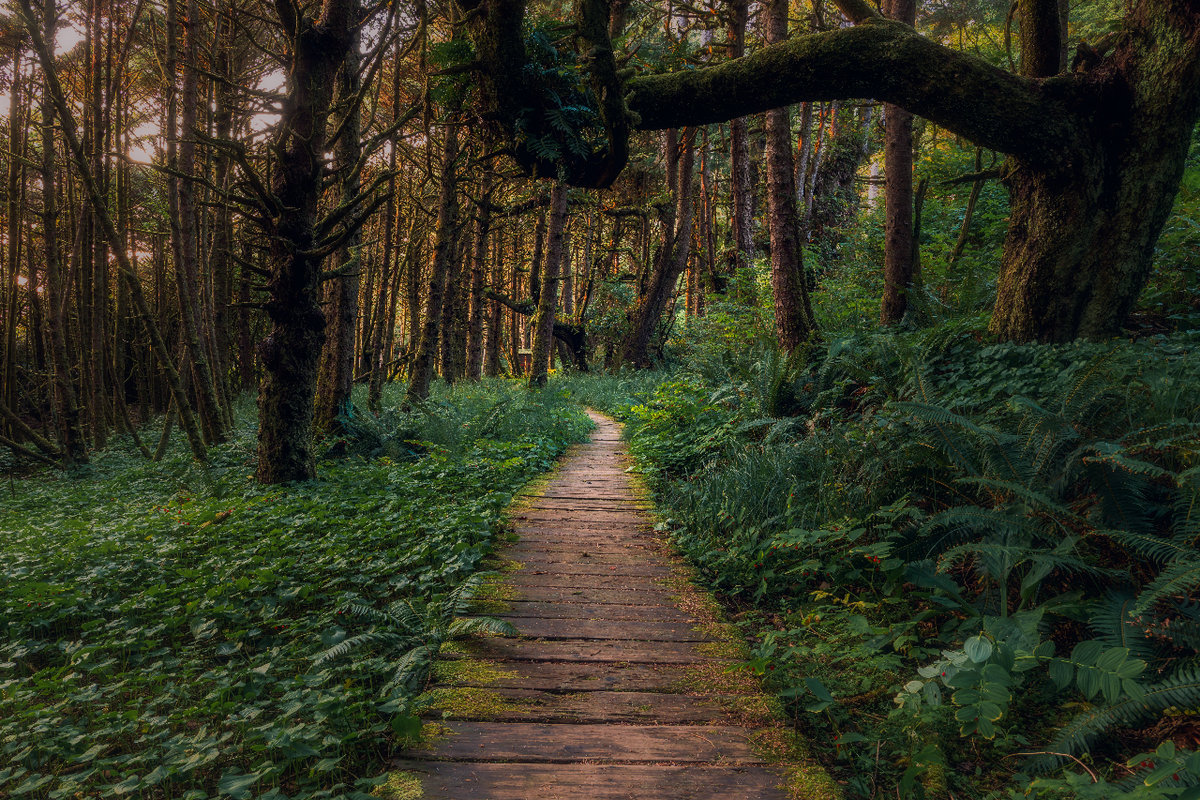
We collect basic website visitor information on this website and store it in cookies. We also utilize Google Analytics to track page view information to assist us in improving our website.
Written By: Ryan Smith
Prior to European settlement, Ontario and was dominated by large tracts of old growth forests. The arrival European settlement starting in the 1700’s led to massive changes in the landscape and forest composition of Eastern North America. Settler activities such as logging, agriculture, and urban development contributed to these changes. Today, remaining old growth forests are few and far in between.

Old growth forest in Tofino, BC, Canada. James Wheeler
Old growth forests are often thought to be solely dominated by large trees with huge trunks and canopies. While it is true that large-trunked super-canopy trees are a component of old growth forests, they are not the only feature that separate them from younger successional forests. Life in an old growth forest exists in multiple layers which have varying components including:
The ecological relationships within forests are complex and multi-dimensional and take time to develop. Old growth forests are home to these ecological relationships which are vital to the preservation of species.
The planet is currently in the 6th known mass extinction event. In the past 50 years, numbers of vertebrate individuals have decreased by 70%. One of the primary drivers of the rapid decline of biodiversity is the loss of habitat fueled by anthropogenic activities. Old growth forests provide high quality habitat for a variety of species. The ecosystem functions provided by old growth forests cannot be replicated in younger stands. Species that rely on old growth forests have seen significant and alarming declines in Ontario. The Cerulean Warbler, Red Headed Woodpecker, Wood Thrush, Algonquin Wolf, Mountain Lion, and Wolverine are just a few species that have seen significant declines due to the loss of old growth forests.
Trees and plants themselves are also threatened by human activities and the encroachment of foreign and invasive plants, diseases, and insects. Old growth forests play a vital role in the preservation of genetic diversity. Species develop genetic traits overtime to protect against environmental stressors such as heat, drought, disease, and pests. The loss of old growths forest and subsequent genetic diversity puts many native species at risk. Numerous species such as Ash (Fraxinus), Hemlock (Tsuga canadensis), Beech (Fagus grandifolia) and Butternut (Juglans cinerea) are at risk in Ontario due to invasive pests and diseases. The preservation of genetic diversity within old growth forests is essential for the survival of resilient genes and tree species.
Forests are known as the “Earths Lungs”. They sequester carbon from the atmosphere and emit oxygen which is essential for life on earth. The sequestration of carbon from the atmosphere plays a vital in offsetting climate change. The process of photosynthesis is responsible for carbon sequestration offered by plants. As part of photosynthesis, plants captures carbon from the atmosphere which is then utilized and stored in the plant’s biomass. Carbon stored in biomass will eventually make its way into soil as plants die and decay on the forest floor. Over periods of hundreds and thousands of years, old growth forests accumulate a significant amount of carbon stored within the soil. Human activities such as logging, land clearing and agriculture disrupt the soil and release stored carbon back into the atmosphere. Old growth forests represent one of the earths largest terrestrial carbon sinks, and retaining these forests is essential to combat climate change.

1300 year old cedar hanging out of the cliffs of Lion’s Head retrieved from https://www.ancientforest.org/ontarios-oldest-trees/
The stunning limestone cliffs of the Bruce peninsula contain some of the oldest trees in Ontario. The oldest known tree In Ontario can be found on the cliffs of Lion’s Head. At first glance the ancient eastern white cedars sprawling from cliffside rocks may appear to be weathered, weak and unhealthy. These trees are known to be as old as 1330 years old.

Old Growth Deciduous Swamp in Rondeau Provincial Park Retrieved from https://ontariohiking.com/rondeau-provincial-park/
The Carolinian forests of the southwestern Ontario are the most biodiverse and threatened forests in Ontario. Rondeau Provincial Park contains some of the last remaining old growth Carolinian forest in Ontario. Black Walnut (Juglans nigra), Red Oak (Quercus rubra), Shagbark Hickory (Carya ovata) and White Ash (Fraxinus americana) can all be found in the park aging of upwards to 250 years.

Hemlock Forest in Algonquin Park Retrieved from https://www.ancientforest.org/hemlock/
Algonquin Park is Ontario and Canada’s oldest provincial park established in 1893. It is home to 40% of old of old growth forests in the Great Lakes St-Lawrence region. Algonquin Park is home to some of the oldest Hemlocks (Tsuga canadensis) in the world aging up to 500 years old. White Pine (Pinus strobus) can be found in the park upwards of 500 years old, ironwood (Carpinus caroliniana) 240 years old, and Yellow birch (Betula alleghaniensis) upwards of 350 years old.
Ontario’s Old Growth Forests have seen drastic changes and decline since the arrival of European settler communities, however old growths forests till persist in select locations across the province. To learn more about locations and populations of old growths forests in Ontario visit Ancient Forest Exploration & Research - Ancient Forest Exploration & Research.
Addtional Reading and Resources
THE OLD-GROWTH FORESTS OF SOUTHERN ONTARIO (lrconline.com)
Eastern hemlock: Ontario's forest cathedrals - Ancient Forest Exploration & Research
Comments on the 2021-2031 Forest Management Plan for Algonquin Park - Ontario's old growth forests
Henry, M., & Quinby, P. (2021). Ontario's old-growth forests. Fitzhenry & Whiteside.
Join our email list to receive occasional updates about Network of Nature and ensure you get the news that matters most, right in your inbox.